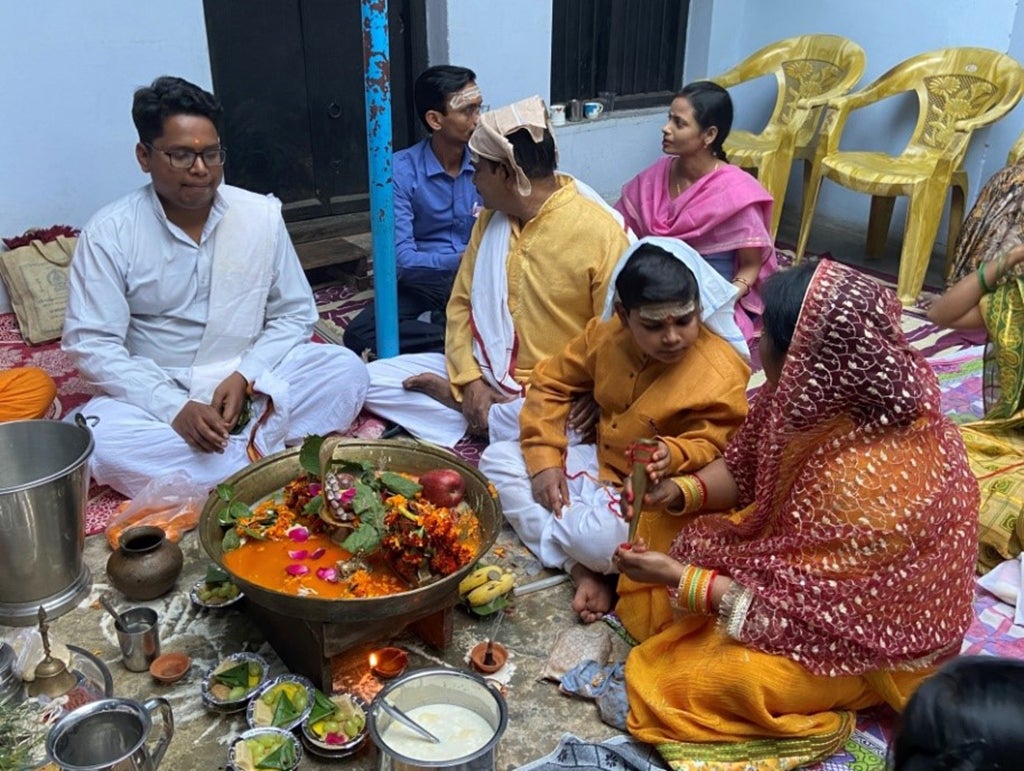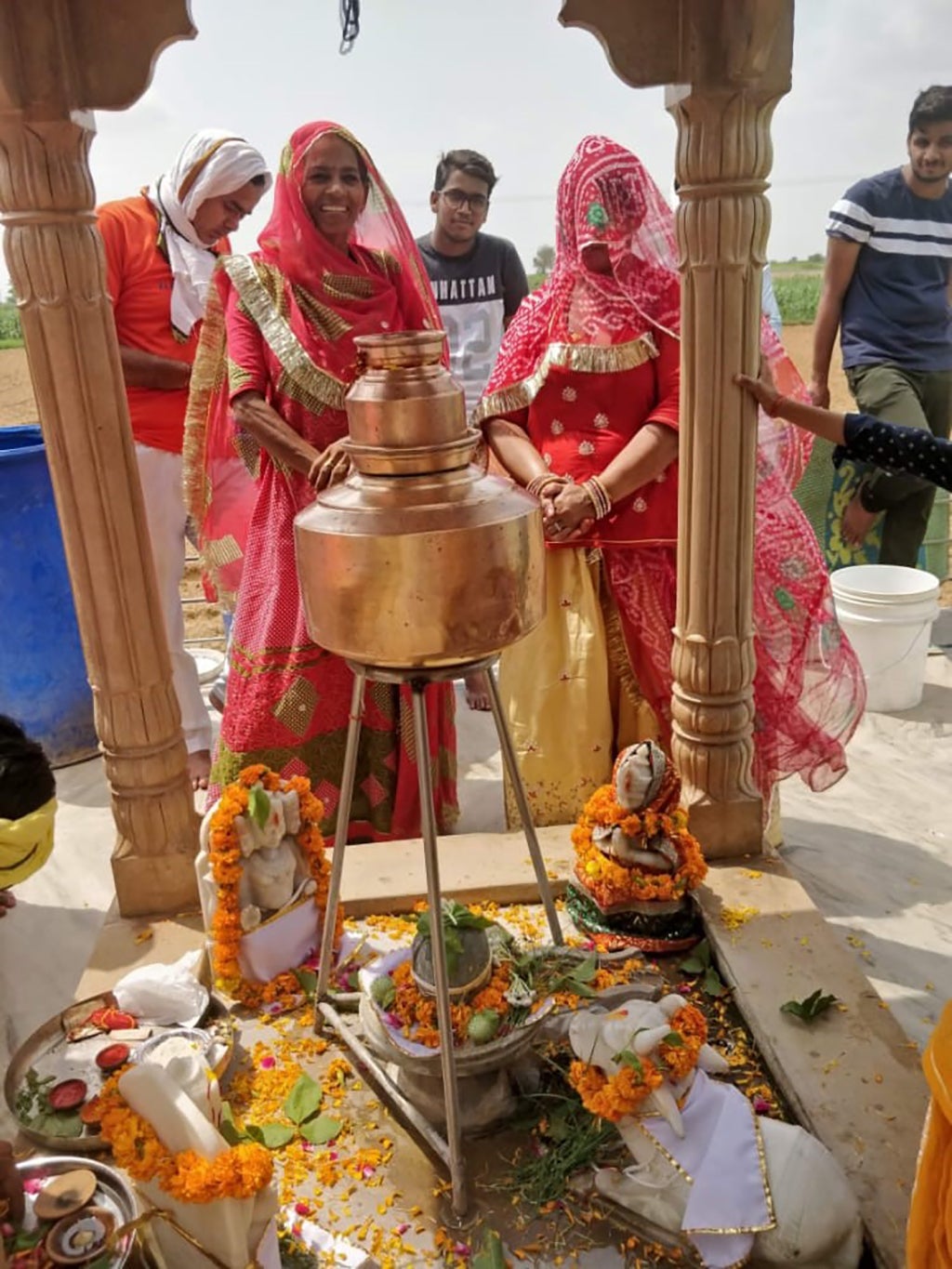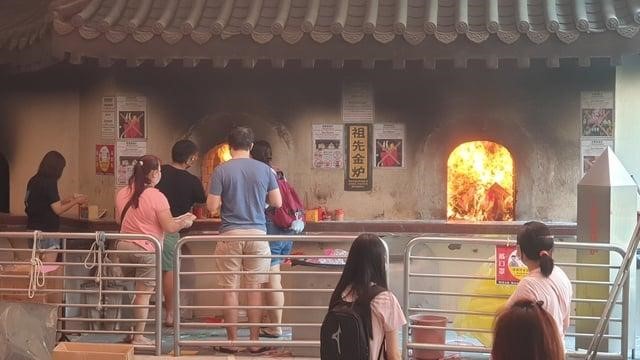Ushering “Saawan” in pandemic times: Shiva worship in North India
contributed by Sonal Mobar Roy, 14 October 2021
The month of “Saawan” aka Shravan (July 23 to August 22, 2021) knocked on the door during the pandemic. It is the fifth month of the Hindu calendar and considered to be the most auspicious month of the year. For North Indians, it is the month of revering Lord Shiva, one of the Trimurti in Hindu religion. According to the Hindu calendar, every Monday of Saawan is considered highly auspicious and offerings are made to Shiva. Abhishekam (ritual bathing of a divinity) is performed on the shivalinga. Shivalingas are abstract or iconic representations of Shiva and the fertility he is associated with.
I was born and brought up in Uttar Pradesh, where I have witnessed and participated enthusiastically in the rituals of offering milk and honey on shivalingas at temples. The jostling crowds of ladies early in the mornings are a sight to see. According to the local beliefs, fasting on sixteen consecutive Mondays beginning from the first Monday of Shravan and revering Shiva leads to getting a good life partner for an unmarried woman. This practice is popular in most North Indian states.

Figure 1: A family performing Rudrabhishek at home during COVID-19 times, Varanasi, 2021. Credit: Sourced through a student, Bhawana Rana
Every year, there is a Kanwar Yatra to Haridwar in this auspicious month. The “Kanwar Yatra” is an annual practice by the devotees of Shiva wherein thousands of men across the country undertake the journey of fetching the holy water from where the Holy Ganga originated and bring it to the local shrines and temples of Shiva. The “Kanwariyas” carry the vessels with water hung on their shoulders on either side of the pole and travel by foot to cover long distances. They have to follow a temporarily ascetic regime and strict protocols so as not to pollute the holy water they are carrying.

Figure 2: Ladies revering Shivalinga at a temple in Rajasthan; Bel leaves and dhatura flower can be seen on the Shivalinga, 2021. Credit: Sourced through a student Himanshu Dev
The Kanwariyas are offered food and other things on their way by the people who cheer for them and wish them a successful journey till they are able to anoint the shivalinga on Mahashivratri and offer the Ganga water (Gangajal) brought with them. The devotees carry the holy water to pour on the shivalinga. In many South Indian states, female worshippers are not allowed in the sanctum sanctorum to touch the shivalinga. However, in North India women are allowed to touch the shivalinga and make the offerings too.

Figure 3: Shiva family models arranged at my home for abhishekam, Lucknow, 2021. Credit: Photo by the author
Due to the current COVID-19 pandemic that has gripped the whole world, the Kanwariya Yatra was called off in 2021. The effect of the pandemic could be witnessed in that the devotees stayed indoors and preferred to perform “Rudraabhishek” privately at home. It was amusing to note that this time there were fewer shops in the market selling bel leaves and dhatura. Rather, these products were available online (https://www.rudraksha-ratna.com/buy/datura-fruit---set-of-3).
The priests came following all Covid-19 protocols to perform the rituals at home. Less paraphernalia was used in the rituals and the “dakshina” or the payment to the priest was made online through Google Pay to avoid any kind of physical cash transfer. Every year, after such rituals, I would give a pair of clothes, some sweets and fruits along with cash to the priest, but this year he requested in advance to avoid such gifts and transfer equivalent money online.
In some temples the doors remained open, with the social distancing norms and protocols in place. A few devotees did throng the temples especially on Mondays to perform abhishekams. This ritual consists of offering Ganga water that is believed to have originated from Shiva’s hair (jata) in the month of Saawan. Along with that, the devotees offer milk, curd, honey, sandal powder, sugarcane juice, bel leaves (Aegle marmelos), dhatura flowers, fruits and betel leaves to please the god and seek his benevolence.
There were instances where dhatura (a poisonous flower that Shiva, like any poison, is able to turn into nectar) was especially offered to Shiva to ward off the evil of Corona. It was assumed that since the fruit resembles the shape of the coronavirus, offering it to Shiva will help in destroying the virus.
The Kashi Vishwanath temple located on the banks of holy river Ganga in the historic city of Varanasi saw the devotees throng the banks for the holy dip and then rushing for darshans to the temple flouting COVID-19 protocols and risking their lives. The same was covered by the media (see this article).
The by-lanes that lead to the main temple in Varanasi are narrow and tightly packed. On both sides, shops selling all the paraphernalia one requires for performing rituals are seen. I recall that I would often pick up mementos and wooden toys from those by-lanes. Imagining a crowd rushing for abhishekam on a Monday is dreadful. The media too reported there was a fear that such mass movement may trigger havoc (see this article).
As the world was overcoming the havoc created by Corona, India saw a surge in COVID-19 cases in the months of April-May 2021. The government appeared helpless as the healthcare sector got crippled across the country under the burden of large number of cases. The corridors and floors of the hospitals witnessed patients struggling for oxygen and dying helplessly while their family members, kith and kin stood in fraught. The crematorium grounds burnt round the clock and probably for the first time in history, queues were seen outside cremation grounds with people waiting for their turn to come as per token numbers allotted to them. The shortage of pyres led to many bodies being cremated one top of another. The nearby residential areas saw smoke with dust particles settling on window panes as the cremation grounds burnt continuously. The Central and State governments jostled for supply of oxygen cylinders. Trains ran from one city to another to bring the oxygen supply to areas where the numbers had surged and oxygen was unavailable. Para-medics were asked to hold the fort and social media was flooded with videos telling people about preventive measures to save oneself from the deadly virus. All these interventions did show positive results in bringing down the curve subsequently.
Witnessing the way people were swarming the temple shows that the belief in the supreme god outlasted the fear of Corona. It is hoped that as the masses get vaccinated, immunity levels will raise and belief in the gods above will help overcome the virus and its deadly manifestations.
Disclaimer: The views and opinions expressed in this article are those of the authors and do not necessarily reflect the position of the blog editorial team or the Asia Research Institute.
South Asia | Southeast Asia | East Asia | Other Places | Hinduism | Buddhism | Islam | Christianity | Other Religions
Dr Sonal Mobar Roy is currently working as an Assistant Professor at Centre for Post Graduate Studies and Distance Education, National Institute of Rural Development and Panchayati Raj, Hyderabad, India. She has her doctorate in Sociology from IIT Kanpur and Master’s in Social Anthropology from Lucknow University. Her current research is assessing the impact of government schemes on nutrition status of tribals in rural hinterlands.
Other Interesting Topics
Ritual Adaptations on Telok Ayer: Liturgical Negotiations in a Chinese Temple and a Methodist Church
In my previous post, I shared my personal experience and methodology in conducting ethnography research without the usual embodied fieldwork as the pandemic evolved. In this post, I will share some of the findings I had gathered in my capacity as an independent researcher working on Singapore Heritage Society (SHS)’s historic places of...
Prayers, Protocols and Pandemics, Part 1: Do My Ancestors Need Masks? The Impact of Coronavirus on the Seventh Lunar Month Festivities in Singapore
Joss paper, as well as paper effigies of goods associated with this world, are indispensable offerings at any observation of the seventh lunar month in Sinophone societies, and Singapore is no exception to the rule. Just before the seventh lunar month, a friend texted me...
The Transformation of Temple Operations in (post-) COVID-19 China
This blog post documents preliminary research findings on the reconfiguration of temple operations in (post-) COVID-19 China, which is part of a collaborative research project titled ‘Religion going viral: Pandemic transformations of religious lives and ritual performances in Asia’...




